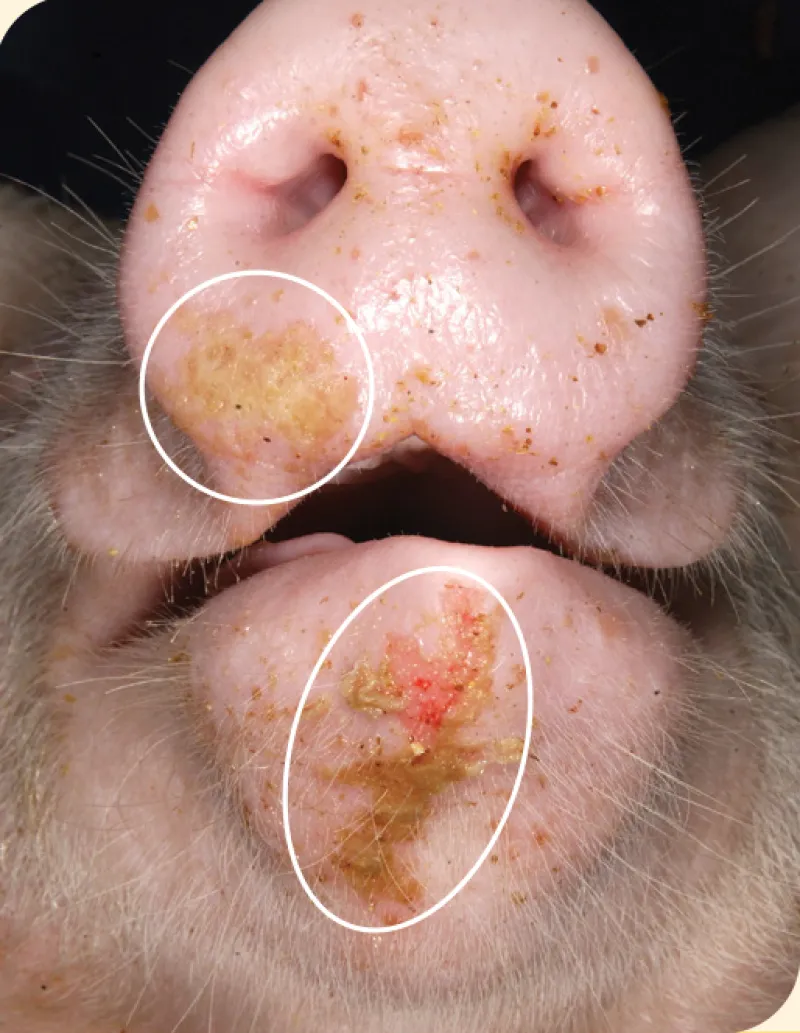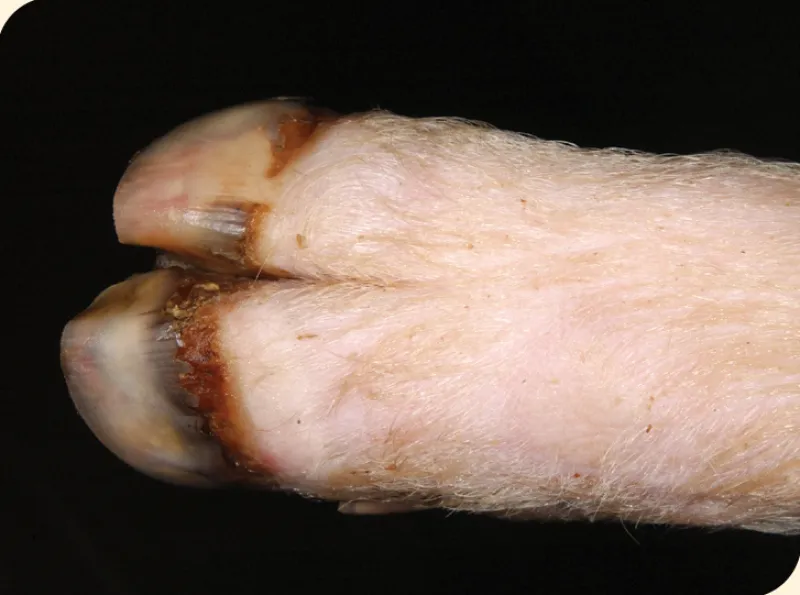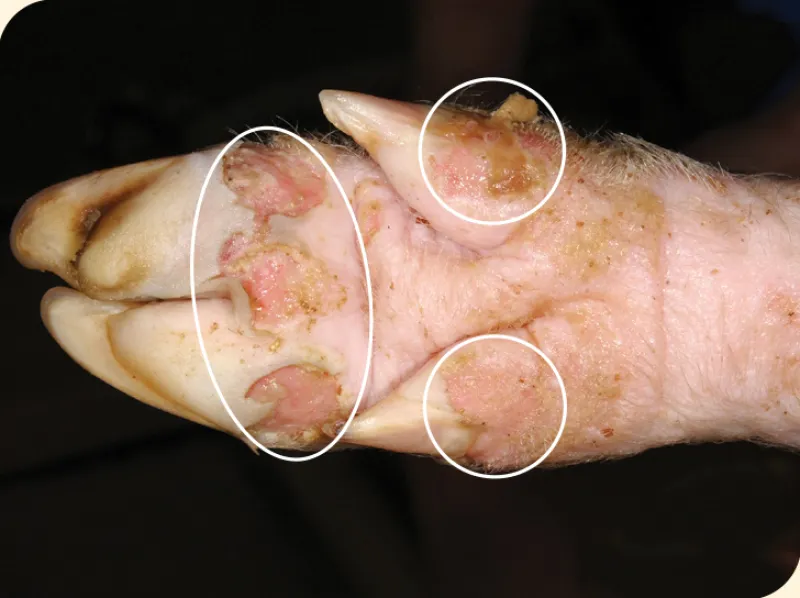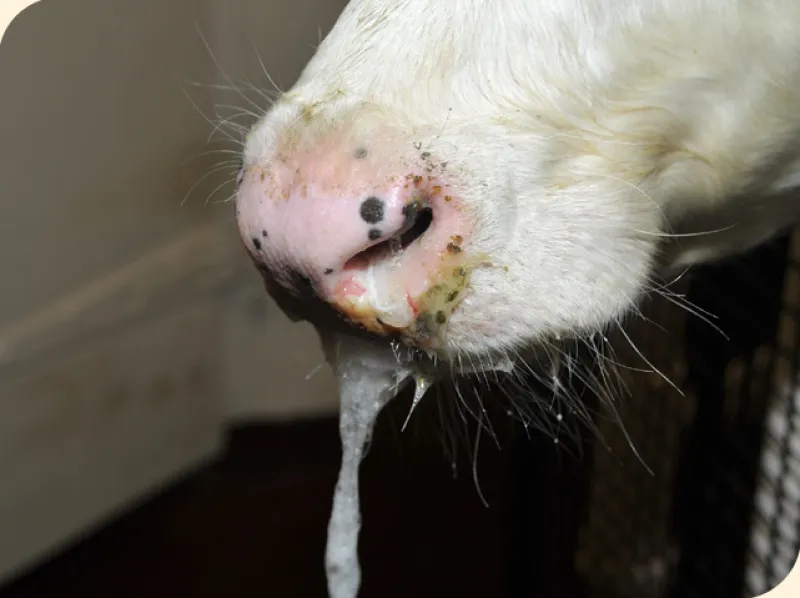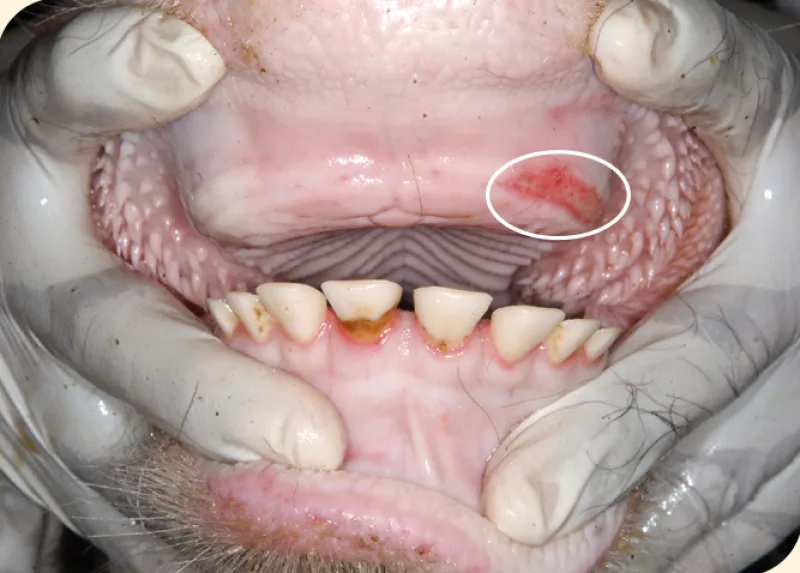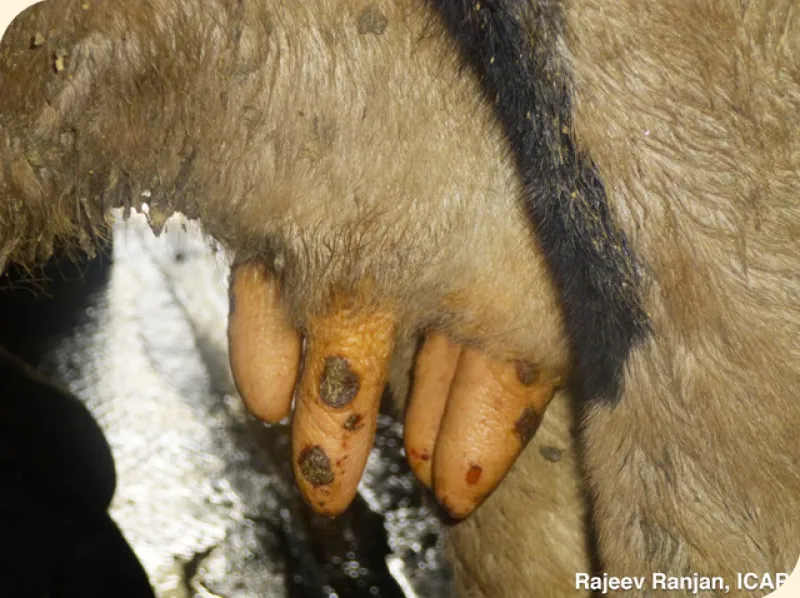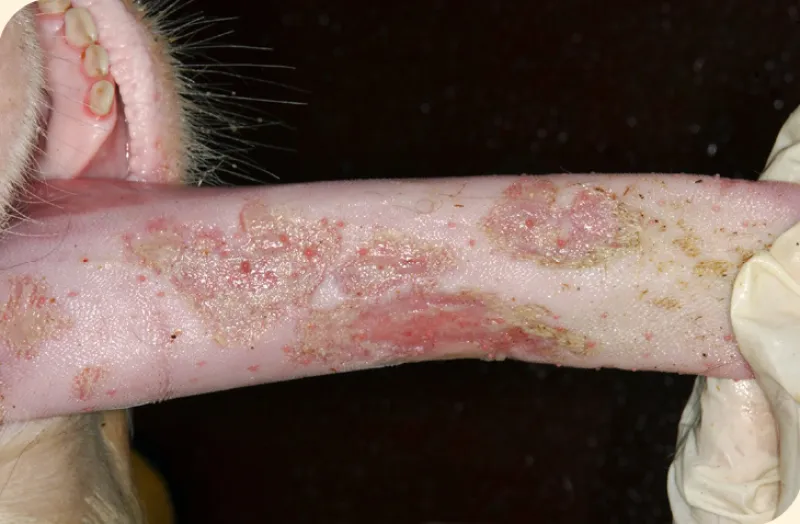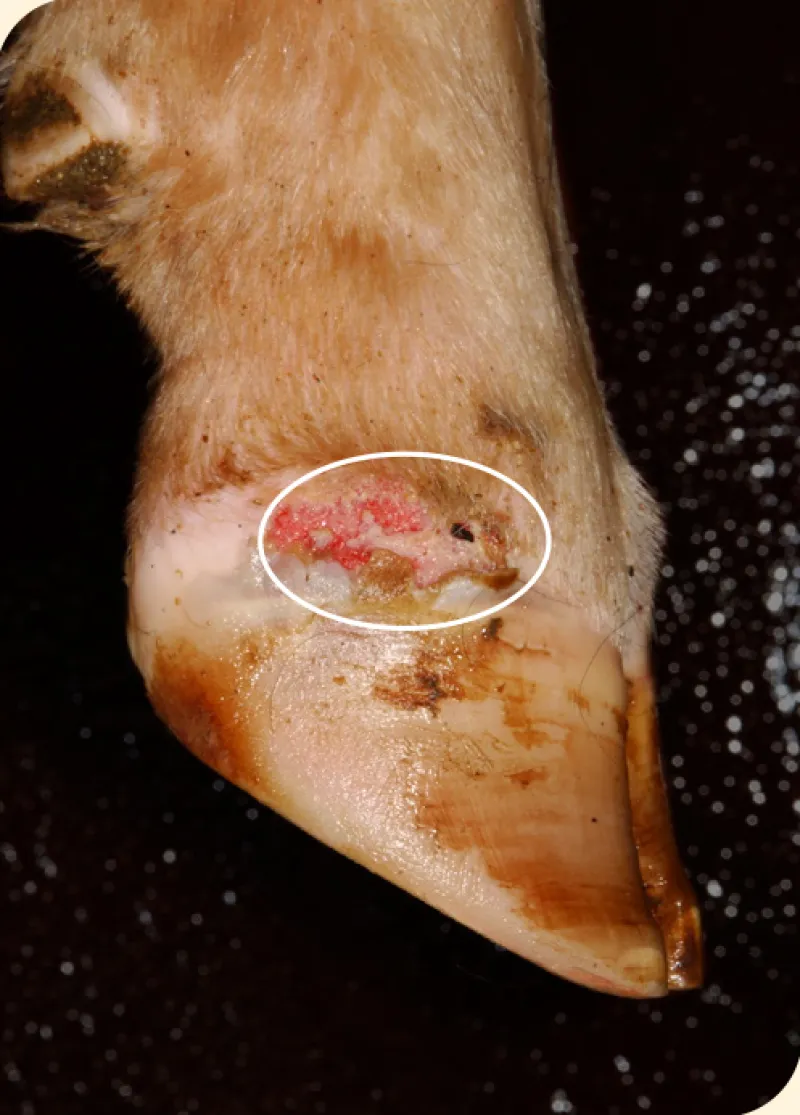Foot-and-Mouth Disease (FMD) is considered one of the most contagious animal diseases. It is a viral disease that affects cloven-hoofed animals, including cattle, pigs, sheep and goats. Wild cloven-hoofed animals like deer, bison, antelope and feral swine are also susceptible. The disease is caused by the Foot-and-Mouth Disease Virus (FMDV), which is primarily spread through direct contact between infected and susceptible animals. The virus is also readily spread via contaminated environments, objects (such as buckets, shovels and other equipment), people and vehicles.
There have been no positive cases of FMD in the U.S. since 1929; however, it does occur in many parts of the world and continues to be a concern for reintroduction. If introduced into the U.S., as many as 100% of animals may become ill. Death from FMD is generally less than 5% in adult animals; however, it can be 20% or more in young calves, lambs and piglets.
FMD poses significant economic threats to the U.S. livestock industry due to its impact on animal health, productivity and world trade. Because of this, U.S. animal health authorities have assembled a detailed FMD response plan. Part of this response may include the use of emergency vaccination strategies. There are vaccines available to be proactive against FMD; however, to be effective, the vaccine for the FMDV strain must match the specific FMDV strain causing the outbreak. The USDA Animal and Plant Health Inspection Service (APHIS) regulatory authorities will determine the use of emergency vaccination during an outbreak in the U.S.

